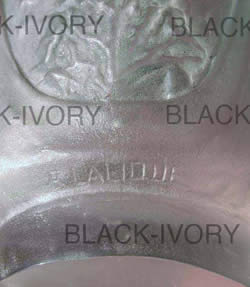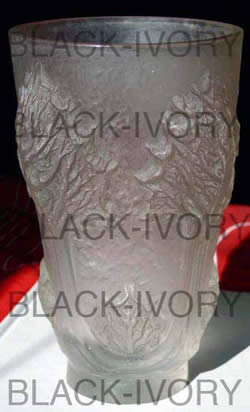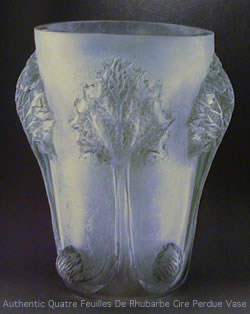Hi. I have a bridge to sell you. It’s a wonderful bridge clearly marked “Golden Gate”. It’s in excellent condition. I inherited it from my uncle who loved bridges and had a bridge collection. My uncle told me it’s a valuable and important bridge, and I have great respect for my uncle. I don’t know anything about bridges or the value of bridges, but out of respect for my uncle and the high esteem in which he held this bridge, I have put a price on it to honor his memory. Oh, the bridge sells “as is”, payment by wire transfer, no guarantees, no refunds, no returns.

And when the deed is done the bridge seller will shout to the rafters as Iago observes to Cassio in Shakespeare’s Othello: “As I am an honest man ..!” Maybe he is, who cares (see seller motivation discussion below).
We have received half a dozen inquiries here at World Headquarters about this crafty listing. Here is a link to a saved/cached image version of the original 370308740347 listing online. You may have to use the zoom function of your browser (or whatever program opens images for you) to get the cached image to expand in the window if it does not appear full size. After clicking on the link to the item, a new window will open with the cached image in it. On a Mac, just click on the image and see if that expands it. If not, press the apple key and click on the cached image in your browser window. On a PC, hold down the alt key while clicking on the cached image. You have got to love some of this stuff; you have to love it!
 So keeping in mind that an analysis from photos is no substitute for having the piece in hand, here it is:
So keeping in mind that an analysis from photos is no substitute for having the piece in hand, here it is:
The vase does not appear to exhibit the variability of finish typically found in Cire Perdue. It seems frosted either with acid or sand, instead of being Cire Perdue glass. Look at the design close up in the photo of the signature.
The underside of the base is polished and flat. Everything from fingerprints to imperfections, to almost a look of glass flow in some areas, incorporated shards and other issues that you typically see when looking thru the base of a Cire Perdue vase are not evident in the photos of the polished solid base shown in the ad.
 So this is two different flags. We can’t say that no cire perdue vase would have a polished and flat underside as even the Oracle has not seen every last one of them. But totally polished and flat is not a hallmark of a Lalique Cire Perdue Vase base. Of course, if you had not ever had one in your hand, and were only working from a photo, how would you know what the underside of the vase should look like?
So this is two different flags. We can’t say that no cire perdue vase would have a polished and flat underside as even the Oracle has not seen every last one of them. But totally polished and flat is not a hallmark of a Lalique Cire Perdue Vase base. Of course, if you had not ever had one in your hand, and were only working from a photo, how would you know what the underside of the vase should look like?
The extended base itself is not coherent with the vase, or typical of how Rene Lalique Cire Perdues are normally designed.
The signature from the photo is not typical of the period Cire Perdue signatures we have observed in person. It also differs from the signature on the known authentic original discussed below that is in the collection of the Musee des art decoratifs in Paris. And again, if you have not had Cire Perdue in your hand, you may not have access to what the signatures look like.
 The signature appears frosted-over in the photo. This would not be typical with Cire Perdue.
The signature appears frosted-over in the photo. This would not be typical with Cire Perdue.
The vase appears in shape and in reality to be a mold pressed vase. Briefly, in a mold pressed vase such as Ceylon, or Rampillon or Bacchantes, the inside is normally nearly smooth, as the plunger under high pressure presses molten glass into the relief design and the area between the plunger and the metal mold also has glass in it, else there would not be contact to have the pressure on the glass to push it into the relief design part of the mold.
Also, the plunger has to come out of the mold after pressing, so mold pressed vases are typically shaped wider at the top than at the bottom in a tapered looking way. Of course, it is possible to have offshoots in the mold where glass can flow in solid, and you can even have a wider base, such as with the press mold vase Danaides.
In a mold blown vase, like a Cire Perdue vase, the glass blows out into the high relief areas, and they are generally “hollow” would be a good way to describe the inside of the relief design, with the shape of the inside of the vase mirroring the shape of the design of the outside. Put your fingers into any blown vase such as Six Figurines et Masques, or Sauterelles, and feel the design from the inside, something that you can’t typically do in a press mold vase. One other example to point you to on mold-blown vases is the famous Cire Perdue Exhibition Vase Huit Perruches that is shown in part in the Rene Lalique Bio here on the site. You can put your fingers into the birds from the inside of the vase, they are hollow not solid.
 Now, there can be what we’ll call dimples on the inside of design elements in a press mold vase with high relief, little dips behind high relief design elements. From surmise and not glassmaking experience, these little dimples could be caused by the extra thickness of the glass where the high relief design element is, that is thicker than the surrounding wall area of the vase. When the vase is taken from the mold at the proper time, the thick design area will be a bit hotter than the wall, and there can be a little bit of a dimple created by very minor glass flow in the hotter area. But this is not the same as basically hollow where you can feel the design from the inside.
Now, there can be what we’ll call dimples on the inside of design elements in a press mold vase with high relief, little dips behind high relief design elements. From surmise and not glassmaking experience, these little dimples could be caused by the extra thickness of the glass where the high relief design element is, that is thicker than the surrounding wall area of the vase. When the vase is taken from the mold at the proper time, the thick design area will be a bit hotter than the wall, and there can be a little bit of a dimple created by very minor glass flow in the hotter area. But this is not the same as basically hollow where you can feel the design from the inside.
The vase in the ad has basically solid relief design elements typical of a mold pressed vase.
And think about the purpose of press molding, high pressure in a metal mold. Not in a clay or plaster mold used for Cire Perdue, where the pressure would typically blow the mold apart.
The design of the vase in the ad appears to be a loose copy of the vase design from the Lalique Cire Perdue Vase Quatre Feuilles De Rhubarbe, CP14, that is at the Musee des arts decoratifs in Paris. This famous vase was bought by the museum directly from Rene Lalique in 1913. According to the 1991 Rene Lalique Exhibition Catalogue from the Musee that is available here in the Rene Lalique Books and Library Section on Lalique Exhibition and Museum Books, on the museum’s inventory documentation it is noted their vase is a “Unique Piece”. Hard to believe that Rene Lalique would sell this as a unique vase to the curators of the Musee des arts decoratifs, and then make a copy or near copy to sell to someone else.
 Note that we have this great museum book available in hardback, softback, English or French, new and nearly new. This book also has the included great photo of the famous authentic CP14 vase which you see here.
Note that we have this great museum book available in hardback, softback, English or French, new and nearly new. This book also has the included great photo of the famous authentic CP14 vase which you see here.
Obviously, analyses can differ, especially from photos. But between the great “bridge” language in the advertisement and the 10 or 12 points above, you should avoid the vase.
In the end, keep two things in focus. First, the motivation of the seller is irrelevant to you as a potential buyer. You only care what you know and what you get, not what the seller thinks or knows. It’s too much of a waste of time to worry about the motives or lack of motives of the seller. Worry about the piece! And two, in this instance the seller is not even claiming the vase is an RLalique vase, or that it’s a cire perdue vase, let alone an RLalique Cire Perdue vase. Maybe the ad is supposed to get you to make that conclusion on your own. Maybe not. Either way, we’ve concluded that the vase should be avoided!
UPDATE 12-23-09 and 2/1/10: The sellers canceled their listing after the appearance of this News and Blog article, removing all their photos and substituting bridge photos! Bridge photos! Guess which bridge! You have to love it! But they have now removed the bridge photos as well, so the only thing left is the Uncle story! END OF UPDATE
February 26th, 2010 Update: Switched Item Link To Cached Image Version
All Articles on These Topics: R Lalique - Rene Lalique Authentication, R Lalique Cire Perdue And Rene Lalique Cire Perdue, R Lalique Rene Lalique Auctions News and Results, R Lalique Vases and Rene Lalique Vases, Rene Lalique Museums: R Lalique Museum Collections


Great explanation and I agree, thank you